The streaming entertainment titan dives deeper into original programming to compete with Disney, Nick, and more.
Add a CommentViewing: Blog Posts Tagged with: Edgar Rice Burroughs, Most Recent at Top [Help]
Results 1 - 6 of 6
Blog: Cartoon Brew (Login to Add to MyJacketFlap)
JacketFlap tags: Netflix, Cirque du Soleil, Edgar Rice Burroughs, Cartoon Saloon, Elias, Internet Television, Avi Arad, Kulipari: An Army of Frogs, Luna Petunia, Masha and the Bear, My Butt Went Psycho, Nelvana, Puffin Rock, Tarzan and Jane, Add a tag
Blog: The Mumpsimus (Login to Add to MyJacketFlap)
JacketFlap tags: Suzan-Lori Parks, teaching, Delany, syllabi, pedagogy, Edgar Rice Burroughs, canons, Octavia Butler, Stephen Crane, Add a tag
As someone who dislikes the nationalism endemic to the academic discipline of literature, I had a difficult time figuring out exactly what sort of approach to take to this course — American Literature 1865-present — when it was assigned to me. I wanted the course to be useful for students as they work their way toward other courses, but I didn't want to promote and strengthen the assumptions that separate literatures by national borders and promote it through nationalistic ideologies.
I decided that the best approach I could take would be to highlight the forces of canonicity and nationalism, to put the question of "American literature" at the forefront of the course. This would help with another problem endemic to surveys: that there is far more material available than can be covered in 15 weeks. The question of what we should read would become the substance of the course.


The first choice I made was to assign the appropriate volumes of the Norton Anthology of American Literature, not because it has the best selection, but because it is the most powerfully canonizing anthology for the discipline. Though the American canon of literature is not a list, the table of contents of the Norton Anthology is about as close as we can get to having that canon as a definable, concrete object.
Then I wanted to add a work that was highly influential and well known but also not part of the general, academic canon of American literature — something for contrast. For that, I picked A Princess of Mars by Edgar Rice Burroughs in the Library of America edition, which has an excellent, thorough introduction by Junot Díaz. I also wanted the students to see how critical writings can bolster canonicity, and so I added The Red Badge of Courage in the Norton Critical Edition. Next, I wanted something that would puzzle the students more, something not yet canonized but perhaps with the possibility of one day being so, and for that I chose Wild Seed by Octavia Butler (who is rapidly becoming an academic mainstay, particularly with her novel Kindred). Finally, I thought the Norton anthology's selection of plays was terrible, so I added Suzan-Lori Parks's Red Letter Plays, which are both in direct dialogue with the American literary canon and throwing a grenade at it.
The result was this syllabus. As with any first time teaching a course, I threw a lot against the wall to see what might stick. Overall, it worked pretty well, though if I teach the course again, I will change quite a bit.
The students seemed to like the idea of canonicity and exploring it, perhaps because half of them are English Teaching majors who may one day be arbiters of the canon in their own classrooms. Thinking about why we read what we read, and how we form opinions about the respectability of certain texts over others, was something they seemed to enjoy, and something most hadn't had a lot of opportunity to do in a classroom setting before.
Starting the course with three articles we could return to throughout the term was one of the best choices I made, and the three all worked well: Katha Pollitt's “Why We Read: Canon to the Right of Me” from The Nation and Reasonable Creatures; George E. Haggerty's “The Gay Canon” from American Literary History; and Arthur Krystal's “What We Lose If We Lose the Canon” from The Chronicle of Higher Education. We had to spend some real time working through the ideas in these essays, but they were excellent touchstones in that they each offered quite a different view of the canon and canonicity.
I structured the course in basically two halves: the first half was mostly prescriptive on my part: read this, this, and this and talk about it in class. It was a way to build up a common vocabulary, a common set of references. But the second half of the course was much more open. The group project, in which students researched and proposed a unit for an anthology of American literature of their own, worked particularly well because it forced them to make choices in ways they haven't had to make choices before, and to see the difficulty of it all. (One group that said their anthology unit was going to emphasize "diversity" ended up with a short story section of white men plus Zora Neale Hurston. "How are you defining diversity for this section?" I asked. They were befuddled. It was a good moment because it highlighted for them how easy it is to perpetuate the status quo if you don't pay close attention and actively try to work against that status quo [assuming that working against the status quo is what you want to do. I certainly didn't require it. They could've said their anthology was designed to uphold white supremacy; instead, they said their goal was to be diverse, by which they meant they wanted to include works by women and people of color.])
Originally, there were quite a few days at the end of the term listed on the schedule as TBA. We lost some of these because we had three classes cancelled for snow in the first half of the term, and I had to push a few things back. But there was still a bit of room for some choice of what to read at the end, even if my grand vision of the students discovering things through the group project that they'd like to spend more time on in class didn't quite pan out. I should have actually built that into the group project: Choose one thing from your anthology unit to assign to the whole class for one of our TBA days. The schedule just didn't work out, though, and so I fell back on asking for suggestions, which inevitably led to people saying they were happy to read anything but poetry. (They hate poetry, despite all my best efforts to show them how wonderful poetry can be. The poetry sections were uniformly the weakest parts of the proposed anthology units, and class discussions of even the most straightforward poems are painfully difficult. I love teaching poetry, so this makes me terribly sad. Next time I teach this course, I'm building even more poetry into it! Bwahahahahaaaa!) A couple of students are big fans of popular postmodernist writers (especially David Foster Wallace), so they wanted to make sure we read Pynchon's "Entropy" before the course ended, and we're doing that for our last day.
Though they haven't turned in their term papers, I've read their proposals, and it's interesting to see what captured their interest. Though we read around through a bunch of different things in the Norton anthology, at least half of the students are gravitating toward Red Badge of Courage, Wild Seed, or The Red Letter Plays. They have some great topics, but I was surprised to see that most didn't want to go farther afield, or to dig into one of the areas of the Norton that we hadn't spent much time on. Partly, this is probably the calculus of getting work done at the end of the term: go with what you are not only most interested in, but most confident you know what the person grading your paper thinks about the thing you're writing about. I suppose I could have required that their paper be about something we haven't read for class, but at the same time, I feel like we flew through everything and there's tons more to be discussed and investigated in any of the texts. They've come up with good topics and are doing good research on them all, so I'm really not going to complain.
In the future, I might be tempted to cut Wild Seed, even though the students liked it a lot, and it's a book I enjoy teaching. It just didn't fit closely enough into our discussions of canonicity to be worth spending the amount of time we spent on it, and in a course like this, with such a broad span of material and such a short amount of time to fit it all in, the readings should be ruthlessly focused. It would have been better to do the sort of "canon bootcamp" that Crane and Burroughs allowed and then apply the ideas we learned through those discussions to a bunch of different materials in the Norton. We did that to some extent, but with the snow days we got really off kilter. I especially wish we'd had more time to discuss two movements in particular: the Harlem Renaissance and Modernism. Each got one day, and that wasn't nearly enough. My hope was that the groups would investigate those movements (and others) more fully for their anthology projects, but they didn't.
One of our final readings was Delany's "Inside and Outside the Canon", which is dense and difficult for undergrads but well worth the time and effort. In fact, I'd be tempted to do it a week or so earlier if possible, because we needed time to apply some of its ideas more fully before students plunged into the term paper. I wonder, in fact, if it would be better as an ending to the first half of the course than the second... In any case, it's a keeper, but definitely needs time for discussion and working through.
If I teach the course again, I would certainly keep the Crane/Burroughs pairing. It worked beautifully, since the similarities and differences between the books, and between the writers of those books, were fruitful for discussion, and the Díaz intro to Princess of Mars is a gold mine. We could have benefitted from one more day with each book, in fact, since there was so much to talk about: constructions of masculinity, race, heroism; literary style; "realism"...
I would be tempted to add a graphic narrative of some sort to the course. The Norton anthology includes a few pages from Maus, but I would want a complete work. I'd need to think for a while about exactly what would be effective, but including comics of some sort would add another interesting twist to questions of canonicity and "literature".
Would I stick with the question of canonicity as a lens for a survey class in the future? Definitely. It's open enough to allow all sorts of ways of structuring the course, but it's focused enough to give some sense of coherence to a survey that could otherwise feel like a bunch of random texts strung together in chronological order for no apparent reason other than having been written by people somehow associated with the area of the planet currently called the United States of America.
Blog: PW -The Beat (Login to Add to MyJacketFlap)
JacketFlap tags: tarzan, Dynamite, edgar rice burroughs, Top News, John Carter, Add a tag
 While the best known of Edgar Rice Burroughs’ creations are now in the public domain—Tarzan and John Carter among them—not all the books in those series are out of copyright and trademarks remain. Thus it was that Dynamite’s books such as Lord of the Jungle and Dejah Thoris roused first ire and then legal firepower at ERB, Inc, which filed a lawsuit a couple of years ago claiming trademark infringement. Dynamite responded but kept publishing their books, and the lawsuit dragged on. But now everything is happy as, as with the many times that Batman and Captain America have fought, they have eventually realizes that they are on the same team. And thus ERB and Dynamite have buried the hatchet and announced a publishing PARTNERSHIP that will see Dynamite publish books with the titles John Cater Warlord of Mars, and Tarzan and so on. It’s also because after the massive floparoo of the John Carter movie, Disney/Marvel has let go of the rights.
While the best known of Edgar Rice Burroughs’ creations are now in the public domain—Tarzan and John Carter among them—not all the books in those series are out of copyright and trademarks remain. Thus it was that Dynamite’s books such as Lord of the Jungle and Dejah Thoris roused first ire and then legal firepower at ERB, Inc, which filed a lawsuit a couple of years ago claiming trademark infringement. Dynamite responded but kept publishing their books, and the lawsuit dragged on. But now everything is happy as, as with the many times that Batman and Captain America have fought, they have eventually realizes that they are on the same team. And thus ERB and Dynamite have buried the hatchet and announced a publishing PARTNERSHIP that will see Dynamite publish books with the titles John Cater Warlord of Mars, and Tarzan and so on. It’s also because after the massive floparoo of the John Carter movie, Disney/Marvel has let go of the rights.
Good times for everyone! More money for publishers and less for lawyers one hopes.
BTW, if you read my above link, you’ll see some smart law types chiming in saying that the original suit had some pretty important IP rulings at its heart. Looks like they won’t be settle this time.
Click below the PR for a gallery of ERB’s greatest comics hits.
Edgar Rice Burroughs, Inc., the company founded by the author to protect and maintain his literary creations, and one of the comics industry’s leaders, Publisher Dynamite Entertainment, announced today a comprehensive agreement that will see the return of Burroughs’ original “John Carter: Warlord of Mars” to the pages of comic books, comic strips and graphic novels. The agreement allows for the world-wide publication of the John Carter universe as well as “Lord of the Jungle” and ERB’s library of archival material.
The initiative comes on the heels of the reacquisition of comic book rights by Edgar Rice Burroughs, Inc. that had been held by Walt Disney Pictures and its Marvel Entertainment subsidiary, as well as a recent legal settlement with Dynamite that cleared the way for Dynamite to introduce key characters and plot elements from the John Carter backstory that were, until now, absent from recent comic book interpretations.
“It was important to us that we reacquire the comic book and comic strip rights from Marvel Entertainment so we could reintroduce them in the market place. We’re excited to see the exploits of Edgar Rice Burroughs’ first science fiction adventure hero brought to life in their fullness by the passionate creative talents assembled by the folks at Dynamite,” said James Sullos, President of Edgar Rice Burroughs, Inc. “They’re true fans - and it shows on every page and in every idea they’ve shared with us. Now fans everywhere will be able to appreciate the original adventure stories that later spawned Flash Gordon, Superman, Star Wars and Avatar.”
“Working together with Jim and the team at ERB, we will be taking the worlds of John Carter and The Lord of the Jungle publishing initiatives to a new level. There’s a rich history, and an incredible amount of archival material in the ERB library, and we’re looking forward to bringing it to the fans around the world. This is the beginning of a great relationship.” states Nick Barrucci, CEO and Publisher of Dynamite Entertainment. “I can’t express how happy and excited everyone at Dynamite is to be working hand in hand with everyone at ERB, Inc”.
John Carter debuted in 1912 as the lead character in Edgar Rice Burroughs’ first novel, serialized as Under the Moons of Mars in the pulp magazine, The All-Story, and later published as a complete novel retitled A Princess of Mars. The character excited the imagination of readers and quickly imprinted onto the public psyche. As many literary and popular culture scholars attest, John Carter served as the template for a litany of adventure heroes to follow, from Flash Gordon, Buck Rogers, and Superman to the Jedi knights of Star Wars fame and most recently, Avatar.
In planning for a late 2014 relaunch, Dynamite Entertainment confirmed that the new comic book series will be titled John Carter: Warlord of Mars. Dynamite will also republish other John Carter assets, going back as far as the early 1940s comic strips by John Coleman Burroughs, the son of Edgar Rice Burroughs.
In a related development, new John Carter: Warlord of Mars “adventure strip” episodes will make their online debut in early summer as part of the Edgar Rice Burroughs Digital Comic Strip Service at www.edgarriceburroughs.com/comics. Written by the legendary Roy Thomas, with art by Pegaso (Rodolfo Perez Garcia) of Mexico City, this series will invite readers to accompany John Carter and his compatriots on exciting adventures that delve into the rich, storied history of Barsoom (as the inhabitants of Mars refer to their planet). As with the other nine series featured on the site, including Tarzan and Carson of Venus, the first four episodes of John Carter: Warlord of Mars will be viewable at no charge.
Blog: Galley Cat (Mediabistro) (Login to Add to MyJacketFlap)
JacketFlap tags: Lewis Carroll, Mark Twain, Jonathan Swift, sherlock holmes, eBooks, Jane Austen, Walt Whitman, Charlotte Bronte, Oscar Wilde, Charles Dickens, James Joyce, Franz Kafka, Agatha Christie, Victor Hugo, Herman Melville, Niccolo Machiavelli, Infographics, Edgar Rice Burroughs, Bram Stoker, Mary Wollstonecraft Shelley, Arthur Conan Doyle, Henry David Thoreau, Leo Tolstoy, J.M. Barrie, Alexandre Dumas, Jacob Grimm, Wilhelm Grimm, Sun Tzu, Sir Arthur Conan Doyle, Felix Salten, Ludwig Wittgenstein, Alan Sullivan, Apostle John, Benjamin L. D'Ooge, Dante Alighieri, E.M. Berens, Elsie Finnimore Buckley, Elsie Lincoln Benedict, Erwin Rosen, Fortune Du Boisgobey, H. R. Coulthard, Johnston McCulley, Ralph Paine Benedict, Samuel H. M. Byers, Therese de Dillmont, Vatsyayana, William J. Long, Add a tag
What’s your favorite kind of book? We’ve created a giant flowchart to help you browse the top 50 free eBooks at Project Gutenberg.
Click the image above to see a larger version of the book map. Your choices range from Charles Dickens to Jane Austen, from Sherlock Holmes to needlework. Below, we’ve linked to all 50 free eBooks so you can start downloading right now. The books are available in all major eBook formats.
Follow this link to see an online version of the flowchart, complete with links to the the individual books.
New Career Opportunities Daily: The best jobs in media.
Add a CommentBlog: The Mumpsimus (Login to Add to MyJacketFlap)
JacketFlap tags: science fiction, Delany, Amazing Stories, academia, Edgar Rice Burroughs, Aaron Bady, Add a tag
I stopped by the University library yesterday to take a look at the latest issue of American Literature because it includes not only some interesting essays about Samuel R. Delany, a fellow I've written about a bit myself, but also a fabulous essay by Aaron Bady, "Tarzan's White Flights: Terrorism and Fantasy Before and After the Airplane".
In this essay, there is what may be my favorite statement-required-by-a-rights-holder evah (as they say). It accompanies a drawing by Robert Baden-Powell, author of Scouting for Boys, that appeared in the Daily Mail in 1938 and is titled "Policeman Aeroplanes":
Reproduced by kind permission of the Scout Association Trustees. The Scout Association does not endorse Mr. Bady's article or the use of air power against civilians.So relieved to have that cleared up!
The cover for this issue of American Literature, by the way, reprints the famous August 1928 cover of Amazing Stories. If Duke University Press, the journal's publisher, were to sell posters of this cover, I would buy one in a second, because seeing Amazing Stories on the cover of American Literature gives me irrational, childlike joy.
Blog: The Mumpsimus (Login to Add to MyJacketFlap)
JacketFlap tags: technology, Quotes, future, Edgar Rice Burroughs, Add a tag
Ed left Sears, Roebuck in August 1908, and the card he sent to Emma from South Bend, Indiana, shortly afterward indicates that he was preparing for some new enterprise or engaged in making contacts or purchases for his partnership with Dentzer. Dated September 15, 1908, the card was addressed to Emma at 197 Park Avenue. It reads: "This isn't a half bad little town. Haven't accomplished much yet. Not even my lunch -- 12:15 p.m." On the same date he sent little Joan a card containing one word: "Google."
--Edgar Rice Burroughs: The Man Who Invented Tarzan by Irwin Porges, Brigham Young University Press, 1975, page 104



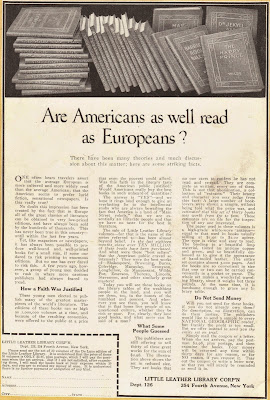


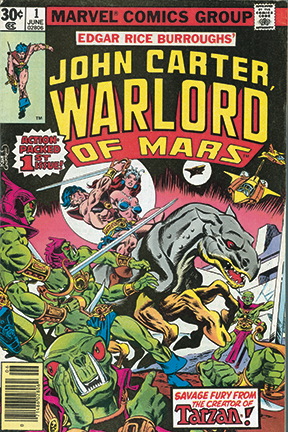
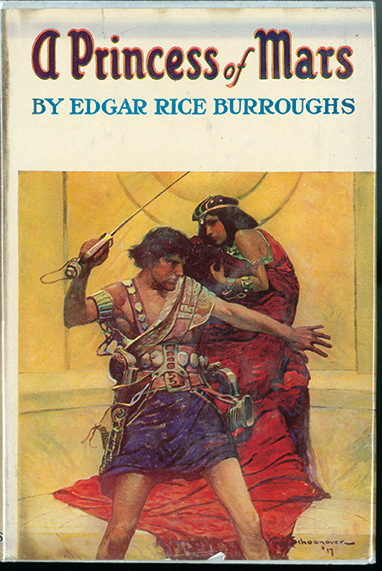
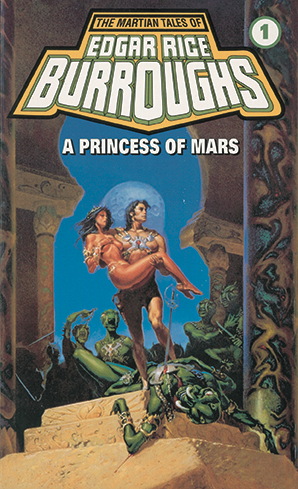
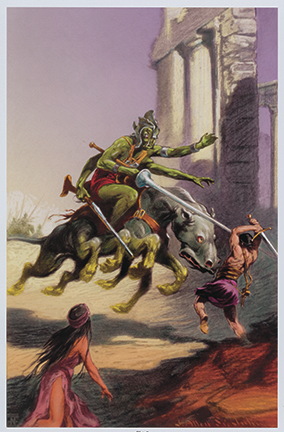

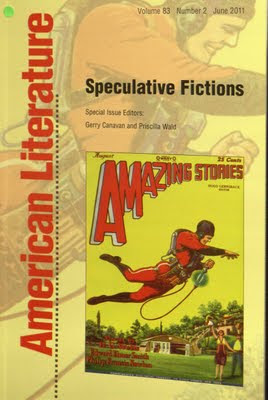
[…] Tweet […]
Why do those last six images look like a Deadhead’s best-and-worst nightmare rather than like the four-color illustrations and paintings that they actually are?
Are these cmyk colour images instead of rgb? It reminds me of times when I didn’t change one image type to another.
Yep they were CMYK instead of RGB. Which is really weird since they are web images?
Anyway, JUST A REMINDER — some browsers and graphics programs (like Graphic Converter which I use to resize etc images) CANNOT HANDLE CMYK IMAGES for the web. They need to be RGB to be posted.
[…] (adsbygoogle = window.adsbygoogle || []).push({});(adsbygoogle = window.adsbygoogle || []).push({}); BTW, if you read my above link, you’ll see some smart law types chiming in saying that the original suit had some pretty important IP rulings at its heart. Looks like they won’t be settle this time. Why do those last six images look like a Deadhead’s best-and-worst nightmare rather than like the four-color illustrations and paintings that they actually are' Read full article […]
So, does Dark Horse still have the license to reprint ERB in archival editions?
I think that’s their second-longest license, after Star Wars, publishing titles since 1996.
[…] Heidi McDonald, writing for The Beat, reports on Dynamite Entertainment and Edgar Rice Burroughs, Inc. resolving out-of-court the […]